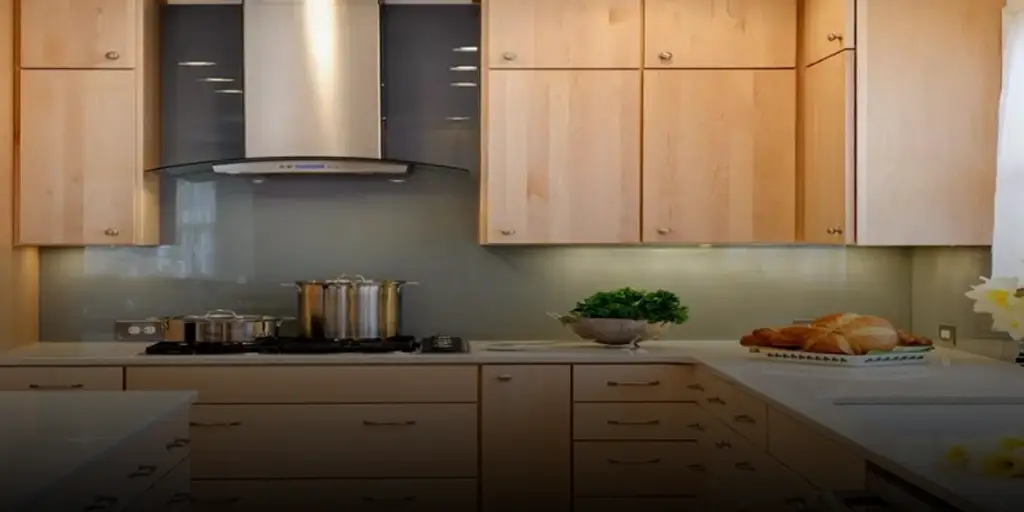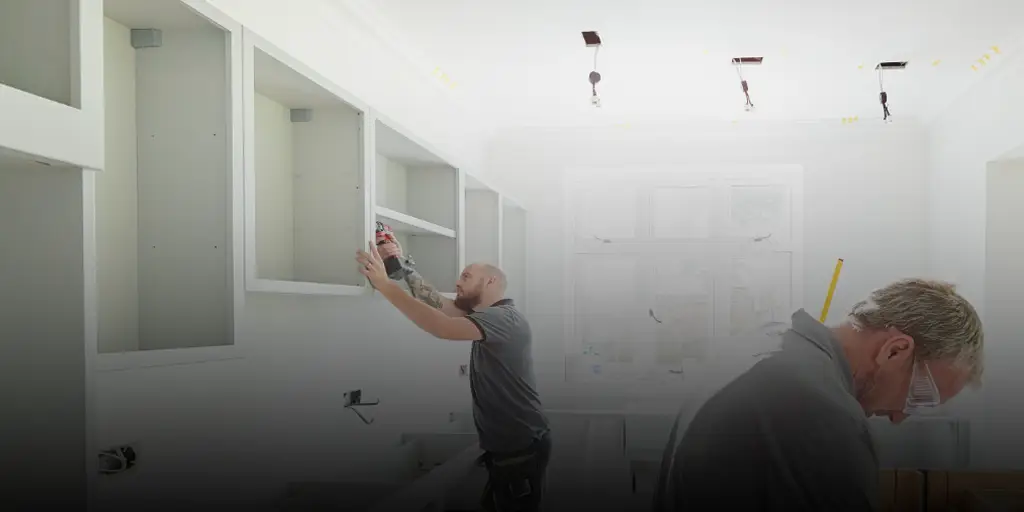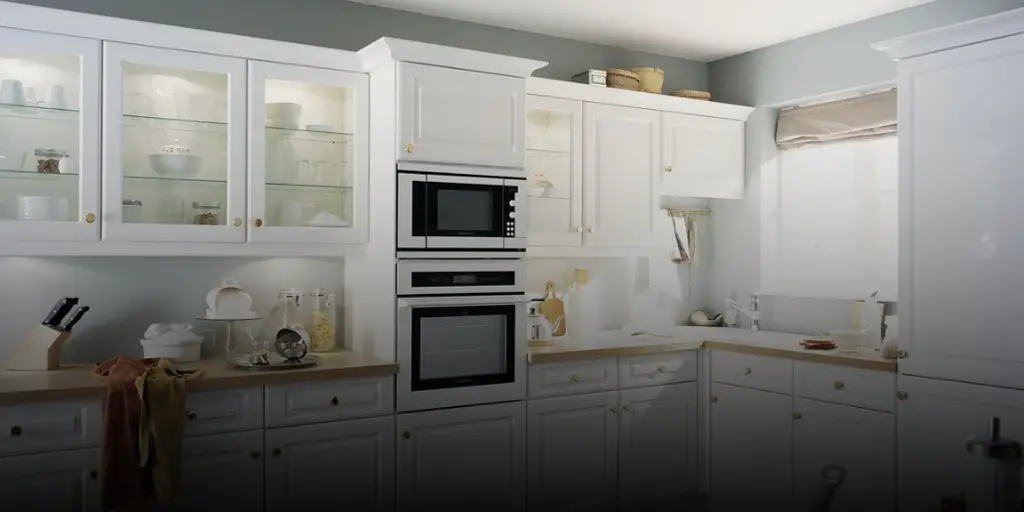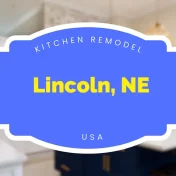When it comes to renovating or designing a kitchen, one of the most crucial decisions homeowners face is choosing between building or buying kitchen cabinets.
These cabinets are not just storage spaces; they are the heart and soul of your kitchen’s aesthetic and functionality.

This decision impacts not only the look and feel of your kitchen but also the budget, time frame, and overall satisfaction with the finished space.
In this comprehensive guide, we delve deep into the world of kitchen cabinets, providing you with all the information you need to make an informed decision.
Whether you’re a DIY enthusiast keen on crafting your own cabinets or someone who prefers the convenience of pre-made units, we cover every angle.
We’ll explore the pros and cons of both options, provide detailed comparisons, and offer innovative design ideas and money-saving tips.
Knowing the Basics of Kitchen Cabinets
Before diving into the decision of whether to build or buy, it’s essential to understand what kitchen cabinets are and their role in your home.
Kitchen cabinets are more than just storage units; they are fundamental elements that define your kitchen’s layout, style, and functionality. They come in various types, each with unique features and design considerations.
Types of Kitchen Cabinets
Base Cabinets: These are the workhorses of kitchen cabinetry, located at the floor level. They provide the foundation for countertops and are crucial for storage and workspace.
Wall Cabinets: Mounted on the wall, these cabinets offer storage at an accessible height and can significantly influence the kitchen’s overall aesthetic.
Tall Cabinets: Also known as pantry cabinets, they extend from floor to ceiling, offering ample storage space for food and large items.
Specialty Units: These include corner cabinets, hutches, and appliance garages, designed to maximize space and add unique functionality.
Material Choices
Wood: Timeless and durable, wood cabinets come in various types, including oak, maple, and cherry.
Laminate: A budget-friendly option that offers a wide range of colors and patterns.
Metal: Stainless steel cabinets provide a modern, industrial look and are highly durable.
Glass: Often used in combination with other materials, glass-front cabinets can open up a kitchen and display fine dishware.
Design Styles
Traditional: Characterized by ornate designs, detailed moldings, and classic colors.
Modern: Sleek, minimalistic cabinets with clean lines and simple hardware.
Rustic: Emphasizes natural beauty with rugged textures and earthy tones.
Transitional: Blends traditional and modern elements for a balanced, timeless look.
Understanding these basics helps in making a well-informed decision on whether to build or buy your kitchen cabinets, ensuring they align with your preferred style, functionality, and budget.
The Pros and Cons of Building Kitchen Cabinets

Embarking on a DIY project to build your own kitchen cabinets can be both exciting and daunting. Here, we’ll explore the advantages and challenges to help you decide if this path is right for you.
Pros of Building Your Own Cabinets
Customization: One of the biggest advantages. Tailor every aspect to your space and taste.
Cost-Effectiveness: Often more budget-friendly than buying pre-made cabinets, especially if you have access to discounted materials.
Personal Satisfaction: There’s a unique sense of achievement in creating something functional and beautiful for your home.
Cons of Building Your Own Cabinets
Time-Consuming: Building cabinets from scratch is a significant time investment. It’s not a weekend project.
Requires Skill: Good carpentry skills are essential. Mistakes can be costly and frustrating.
Tool Availability: You need access to specific tools and equipment, which can be an additional expense.
Considerations When Building
Plan Your Design Carefully: Ensure your design fits your space and meets your storage needs.
Choose the Right Materials: Balance quality with cost. Research the best wood types or alternative materials for durability and aesthetics.
Be Prepared for Challenges: From measuring errors to material mishaps, be ready to tackle issues as they arise.
Building your own kitchen cabinets can be a rewarding project if you have the skills, time, and patience.
It allows for complete customization and can be more cost-effective, but it’s essential to weigh these benefits against the potential challenges.
The Pros and Cons of Buying Kitchen Cabinets

Purchasing pre-made kitchen cabinets is a popular choice for many homeowners. Understanding the advantages and limitations of this option is crucial for making an informed decision.
Pros of Buying Kitchen Cabinets
Convenience: The process is much simpler. Select a style, place an order, and wait for delivery.
Professional Finish: Pre-made cabinets often come with a high-quality finish and consistent craftsmanship.
Variety of Options: A wide range of styles, materials, and designs are available to suit any kitchen theme.
Cons of Buying Kitchen Cabinets
Higher Cost: Depending on the brand and quality, buying can be more expensive than building.
Limited Customization: While there’s a variety, there might be limitations in matching your exact space and style needs.
Potential Wait Time: Depending on the supplier, there could be a significant wait time for delivery and installation.
Considerations When Buying
Measure Your Space Accurately: Ensure the cabinets you order will fit perfectly in your kitchen.
Research Brands and Quality: Look for reviews and ratings to choose a reliable manufacturer.
Understand Warranty and Return Policies: Know what’s covered to protect your investment.
Buying kitchen cabinets offers ease and professional quality but often at a higher cost and with less customization.
It’s a practical choice for those who prefer a hassle-free approach and are willing to pay for convenience and quality.
Comparative Analysis: Building vs. Buying
When it comes to kitchen cabinets, the decision to build or buy is influenced by various factors. This comparative analysis aims to provide a clearer picture to help you decide which option best suits your needs.
Cost Comparison
Building: Generally more cost-effective, especially if you have the necessary tools and skills. Costs include materials, tools, and possibly learning resources.
Buying: Can be more expensive due to manufacturing, branding, and installation costs. However, prices vary widely based on quality and retailer.
Quality and Durability
Building: Quality depends on your skill level and the materials used. Handmade cabinets can be extremely durable if made correctly.
Buying: Professional manufacturers often have quality assurance processes, ensuring a consistent and durable product.
Customization and Design Flexibility
Building: Offers complete design freedom. You can create cabinets that fit your exact space and style preferences.
Buying: Limited by available designs and sizes, though some manufacturers offer semi-custom options.
Time and Effort
Building: A significant time investment is required. It’s a long-term project, especially for beginners.
Buying: Time-saving and convenient. Once you place the order, the rest of the process is handled by the supplier.
Decision Factors
Skill Level: Building is suited for those with carpentry skills or the willingness to learn.
Budget: Consider the total cost, including hidden expenses like tools or professional installation for bought cabinets.
Timeframe: Building takes longer, so buying might be better for those on a tight schedule.
Personal Preference: Consider the satisfaction of building versus the convenience of buying.
Building kitchen cabinets offers customization and potential cost savings but requires significant time and skill.
Buying is more convenient and provides a professional finish but can be more expensive and less tailored to your specific needs.
Step-by-Step Guide to Building Your Own Cabinets
Building your own kitchen cabinets can be a fulfilling DIY project. This step-by-step guide is designed to help you through the process, from planning to completion.
Planning and Design
Measure Your Space: Accurately measure the area where the cabinets will be installed.
Design Your Cabinets: Decide on the style, size, and functionality. Consider door types, drawers, and shelving.
Select Materials: Choose the wood or alternative materials based on durability, appearance, and budget.
Tools and Materials Needed
- Measuring tape, level, and pencil for accurate planning.
- Saws (table saw, miter saw) for cutting materials.
- Sanders and sandpaper for smooth finishes.
- Drill and screwdriver for assembly.
- Hinges, knobs/pulls, and other hardware.
- Wood, plywood, or alternative materials for construction.
- Paint or stain for finishing.
Construction Process
- Cut the Pieces: Based on your design, cut the wood for the cabinet frames, doors, and shelves.
- Assemble the Frame: Use screws and glue to assemble the frame securely.
- Install Doors and Drawers: Attach hinges to the doors and install drawer mechanisms.
- Apply Finish: Sand the surfaces and apply paint, stain, or sealant for a professional finish.
- Mounting the Cabinets: Ensure they are level and securely attached to the wall or floor.
Tips for Quality and Durability
- Precision is Key: Accurate measurements and cuts are crucial for a professional look.
- Quality Materials: Invest in good-quality hardware and wood to ensure durability.
- Take Your Time: Rushing can lead to mistakes. Patience is vital in DIY projects.
Building your own kitchen cabinets is a challenging yet rewarding project. It allows for complete customization and can be a cost-effective solution, provided you have the right tools and skills.
Choosing the Right Cabinets to Buy
If you decide to buy your kitchen cabinets, selecting the right ones is crucial to ensure they meet your needs in terms of style, functionality, and budget. Here’s a guide to help you make an informed decision.
Factors to Consider When Purchasing
Material Quality: Look for cabinets made of durable materials that can withstand daily use. Consider wood, plywood, MDF, or metal, depending on your preference and budget.
Style and Design: Choose a style that complements your kitchen’s overall aesthetic, whether it’s modern, traditional, rustic, or transitional.
Size and Configuration: Ensure the cabinets fit your kitchen layout. Consider the amount of storage space and the placement of appliances.
Finish and Color: Decide on the finish and color that best suits your kitchen’s theme. Options range from natural wood finishes to painted or laminated surfaces.
Hardware: Consider the design and quality of the hardware, including hinges, handles, and drawer pulls.
Steps for Selecting Cabinets
Measure Your Kitchen: Accurate measurements are crucial for a perfect fit.
Research Brands and Suppliers: Look for reputable brands with positive reviews and reliable customer service.
Set a Budget: Determine your budget and find options that offer the best value for money.
Visit Showrooms: If possible, visit showrooms to see and feel the cabinets in person.
Consult with Professionals: Seek advice from interior designers or kitchen remodelers if needed.
Tips for a Smooth Buying Process
- Look for Customization Options: Some manufacturers offer semi-custom cabinets that can be tailored to your needs.
- Check Warranty and Return Policies: Understand the terms in case of defects or issues.
- Consider the Lead Time: Plan your project timeline based on when the cabinets will be delivered and installed.
Purchasing kitchen cabinets can be a straightforward and satisfying experience if you take the time to research and choose wisely. The right cabinets can transform your kitchen, adding both beauty and functionality.
Innovative Design Ideas for Kitchen Cabinets
The design of your kitchen cabinets plays a pivotal role in defining the overall look and feel of your kitchen.
Whether you’re building or buying, incorporating innovative design ideas can elevate the functionality and aesthetic appeal of your space. Here are some creative concepts to consider.
Current Trends in Kitchen Cabinet Design
Two-Tone Cabinets: Combining two different colors or materials for upper and lower cabinets adds visual interest and depth to the kitchen.
Open Shelving: A mix of traditional cabinets and open shelves creates a more open, airy look, perfect for displaying decorative items or everyday dishes.
Glass-Front Cabinets: These add elegance and a sense of openness, allowing you to showcase fine dishware or decorative objects.
Maximizing Space and Functionality
Corner Drawers and Lazy Susans: Utilize corner spaces more efficiently with innovative storage solutions.
Pull-Out Pantries and Spice Racks: Improve accessibility and organization in your kitchen.
Integrated Appliance Garages: Keep small appliances hidden but easily accessible, maintaining a clutter-free countertop.
Eco-Friendly Materials and Designs
Sustainable Wood: Choose cabinets made from certified sustainable wood to reduce environmental impact.
Recycled Materials: Consider cabinets made from recycled materials for an eco-friendly option.
Low-VOC Finishes: Opt for finishes with low volatile organic compounds (VOCs) for better indoor air quality.
Personalized Touches
Custom Handles and Knobs: Personalize your cabinets with unique hardware.
Decorative Lighting: Under-cabinet or in-cabinet lighting adds ambiance and improves functionality.
Bold Color Choices: Don’t be afraid to experiment with color for a unique kitchen look.
Innovative design elements not only enhance the beauty of your kitchen cabinets but also improve their practicality, making your kitchen a more enjoyable and efficient space.
People who want to read this article:
Money-Saving Tips for Kitchen Cabinets
Renovating your kitchen doesn’t have to break the bank. There are several ways to save money while still achieving the look and functionality you desire in your kitchen cabinets. Here are some cost-effective strategies.
Budget-Friendly Tips for Both Building and Buying
Plan and Budget: Start with a clear plan and budget. Knowing your limits helps avoid overspending.
Compare Prices and Options: Shop around and compare prices from different suppliers or consider different material options for building.
Refurbish or Update Existing Cabinets: Instead of replacing, consider repainting, refacing, or changing the hardware on your current cabinets for a fresh look.
Opt for Simpler Designs: Intricate designs and customizations add to the cost. Simple, clean lines are often more affordable and timeless.
Finding Deals and Discounts
Look for Sales and Promotions: Keep an eye out for sales at home improvement stores or online retailers.
Buy Discontinued Styles: Discontinued models are often sold at a discount.
Consider Wholesale or Direct from Manufacturer: Purchasing directly from a manufacturer or a wholesaler can offer significant savings.
Alternative Solutions
DIY Where Possible: If building, do as much as you can yourself. Labor costs can add up quickly.
Mix and Match: Combine budget-friendly stock cabinets with a few custom pieces for a unique look without the full custom price tag.
Second-Hand or Recycled Cabinets: Look for used cabinets in good condition that can be refurbished or repurposed.
Implementing these money-saving tips can help you stay within budget while creating a kitchen that meets your needs and reflects your personal style.
Conclusion
In conclusion, whether you choose to build or buy your kitchen cabinets, the decision significantly impacts the functionality, style, and overall feel of your kitchen.
Building your own cabinets offers a sense of achievement, customization, and potential cost savings, but it requires skill, time, and effort.
On the other hand, buying cabinets provides convenience, professional craftsmanship, and time efficiency, albeit often at a higher cost and with less customization.
Your choice should align with your personal preferences, lifestyle, skill level, and budget. Remember, kitchen cabinets are not just about storage; they are a key element in the design and feel of your home’s most used space.
With the right approach, either option can lead to a beautiful and functional kitchen that meets your needs and reflects your personal style.
We hope this guide has provided you with valuable insights and practical tips to help you navigate your kitchen cabinet project.
Whether you’re embarking on a DIY adventure or opting for the ease of pre-made cabinets, we wish you success in creating a kitchen that you’ll love for years to come.



